In Figure PS is the bisector of ∠QPR and PT ⊥QR . Show that ∠TPS=12(∠Q−∠R)
To solve the problem, we need to show that ∠TPS=12(∠Q−∠R) given that PS is the bisector of ∠QPR and PT⊥QR.
1. Identify the Given Information:
- PS is the bisector of ∠QPR.
- PT is perpendicular to QR.
2. Use the Angle Bisector Property:
- Since PS is the bisector of ∠QPR, we have:
∠QPS=∠SPR=12∠QPR
3. Analyze Triangle QPT:
- In triangle QPT, since PT⊥QR, we know:
∠QPT=90∘
4. Apply the Triangle Sum Property:
- The sum of angles in triangle QPT is:
∠Q+∠QPT+∠TQP=180∘
- Substituting ∠QPT=90∘:
∠Q+90∘+∠TQP=180∘
- This simplifies to:
∠TQP=90∘−∠Q
5. Express ∠TPS:
- We can express ∠TPS as:
∠TPS=∠QPS−∠QPT
- Substituting the values we have:
∠TPS=12∠QPR−(90∘−∠Q)
6. Substitute ∠QPR:
- From the triangle PQR:
∠P+∠Q+∠R=180∘
- Thus, ∠QPR=180∘−∠Q−∠R.
7. Substituting ∠QPR into ∠TPS:
- Now substituting ∠QPR into the equation for ∠TPS:
∠TPS=12(180∘−∠Q−∠R)−(90∘−∠Q)
- Simplifying this gives:
∠TPS=90∘−12∠Q−12∠R−90∘+∠Q
- This simplifies to:
∠TPS=12∠Q−12∠R
8. Final Result:
- Thus, we have shown that:
∠TPS=12(∠Q−∠R)
- PS is the bisector of ∠QPR.
- PT is perpendicular to QR.
- Since PS is the bisector of ∠QPR, we have:
∠QPS=∠SPR=12∠QPR
- In triangle QPT, since PT⊥QR, we know:
∠QPT=90∘
- The sum of angles in triangle QPT is:
∠Q+∠QPT+∠TQP=180∘
- Substituting ∠QPT=90∘:
∠Q+90∘+∠TQP=180∘
- This simplifies to:
∠TQP=90∘−∠Q
- We can express ∠TPS as:
∠TPS=∠QPS−∠QPT
- Substituting the values we have:
∠TPS=12∠QPR−(90∘−∠Q)
- From the triangle PQR:
∠P+∠Q+∠R=180∘
- Thus, ∠QPR=180∘−∠Q−∠R.
- Now substituting ∠QPR into the equation for ∠TPS:
∠TPS=12(180∘−∠Q−∠R)−(90∘−∠Q)
- Simplifying this gives:
∠TPS=90∘−12∠Q−12∠R−90∘+∠Q
- This simplifies to:
∠TPS=12∠Q−12∠R
- Thus, we have shown that:
∠TPS=12(∠Q−∠R)
Topper's Solved these Questions
Similar Questions
In figure PS is the bisector of ∠QPRof ΔPQR. Prove that QSSR=PQPR.
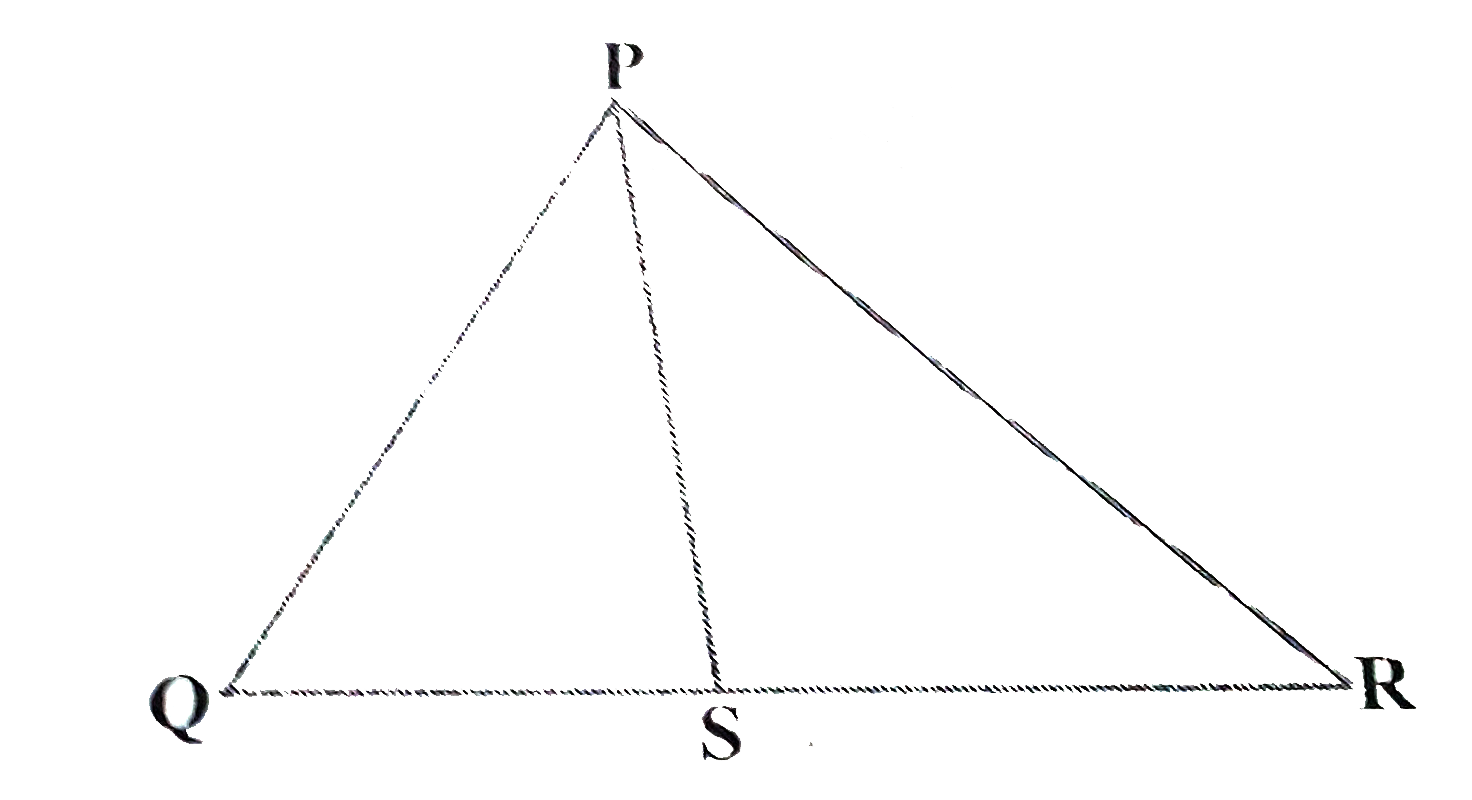 View Solution
View SolutionIn Fig. 6.44, the side QR of PQR is produced to a point S. If the bisectors of ∠PQR and ∠PRS meet at point T, then prove that ∠QTR=12∠QPR.
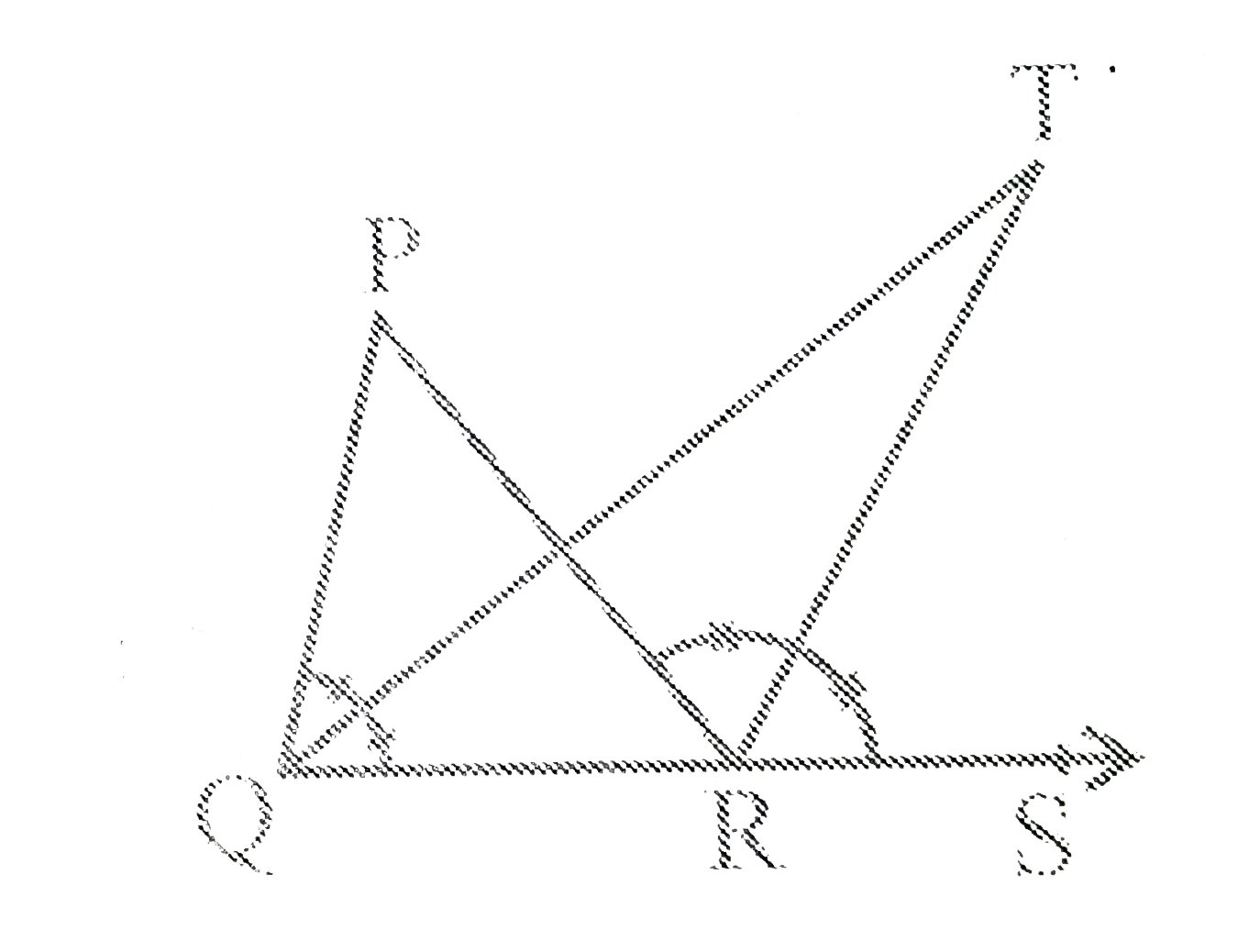 View Solution
View SolutionIn Figure, PSDA is a parallelogram in which PQ=QR=RS and APBQCR. Prove that ar ( PQE)= ar ( CFD).
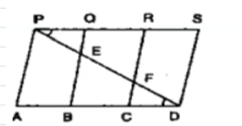 View Solution
View SolutionIf P + Q = R and P - Q = S, prove that R2+S2=2(P2+Q2)
View SolutionIn Fig 7.51, PR > PQand PS bisects ∠QPR. Prove that ∠PSR >∠PSQ.
 View Solution
View SolutionIn Figure, PQRS is a parallelogram, PO and QO are, respectively, the angle bisectors of ∠P and ∠Q . Line LOM is drawn parallel to PQ . Prove that: PL=QM (ii) LO=OM
View SolutionIn Figure, ∠QPR=∠PQR and M and N are respectively on sides QR and PR of PQR such that QM=PN . Prove that OP=OQ, where O is the point of intersection of PM and QN.
 View Solution
View SolutionIn Fig. 4.238, S and T are points on the sides PQ and PR respectively of PQR such that PT=2cm , TR=4cm and ST is parallel to QR . Find the ratio of the areas of PST and PQR . (FIGURE)
View SolutionIn Figure, PQRS and ABRS are parallelograms and X is any point on side BR. Show that : ar(^(gm)PQRS)=ar(^(gm)ABRS) ar(AXS)=12ar(PQRS)
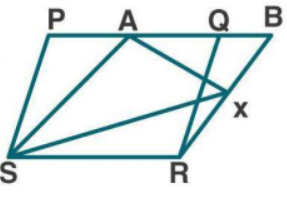 View Solution
View SolutionIn Fig. 6.15, ∠PQR=∠PRQ, then prove that ∠PQS=∠PRT.
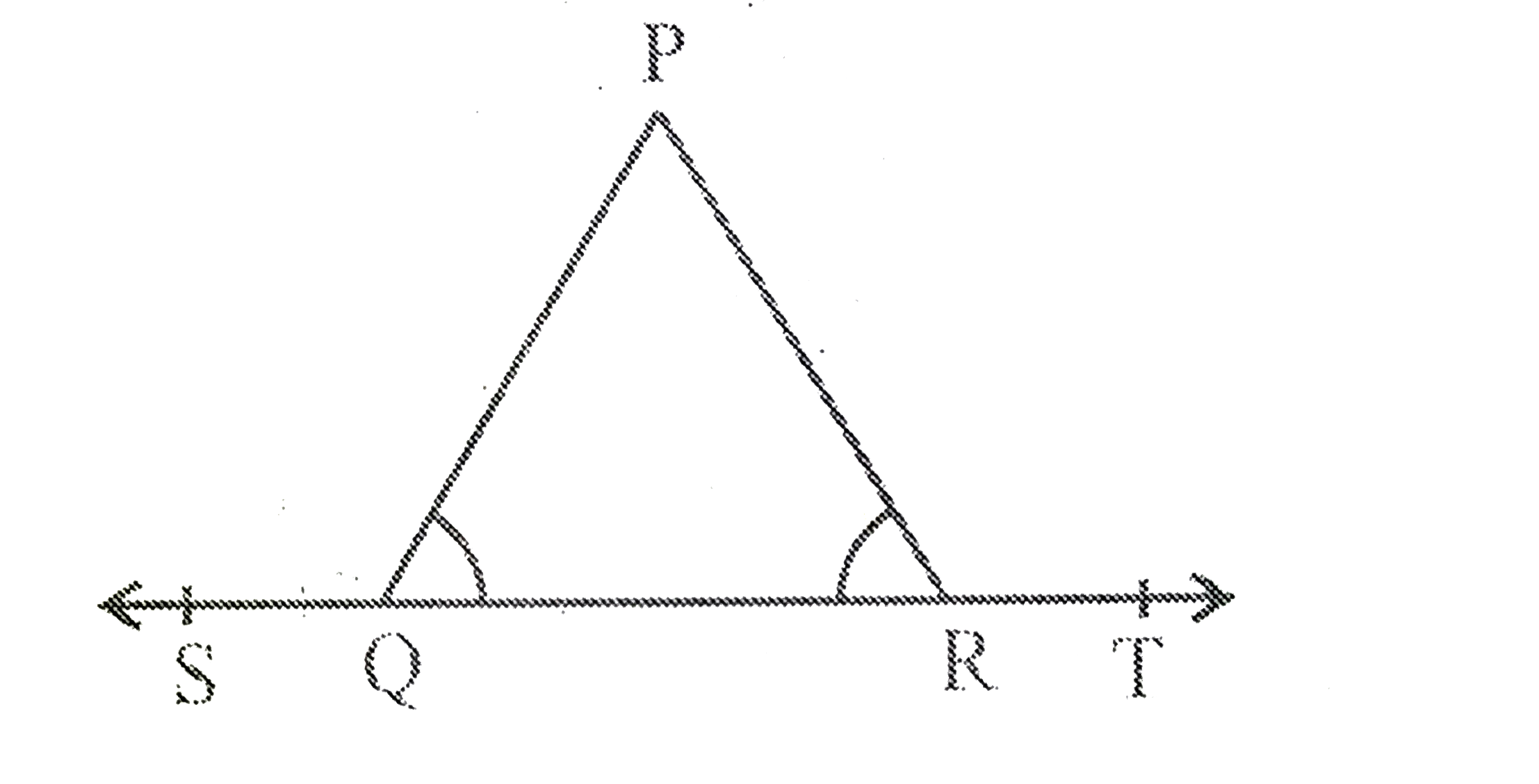 View Solution
View Solution

